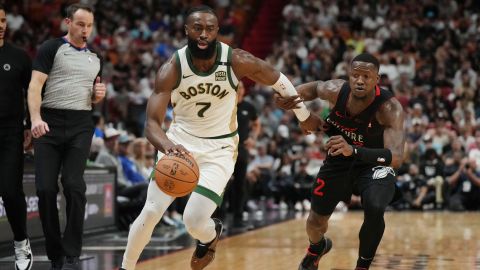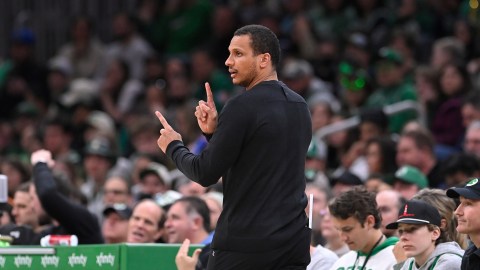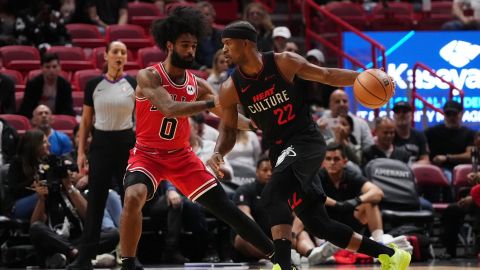 Saying Bill Sharman disliked losing is like saying fish dislike walking. It’s not really about their sentiment, but their physical inability to tolerate the act.
Saying Bill Sharman disliked losing is like saying fish dislike walking. It’s not really about their sentiment, but their physical inability to tolerate the act.
The definitive story of Sharman’s competitive nature comes from the final year of his 11-season playing career. Some snot-nosed rookie named Jerry West just kept draining jump shots in the face of Sharman, then on his last legs but still fiercely proud of his toughness as a defender.
After West hit a few shots in a row, he started to feel good about himself. He hit another. And another. West got up to seven straight buckets overall, but on the last shot, Sharman had a present for him. As the ball went through the hoop, Sharman aimed a punch at West. Although Sharman missed, the fact that nobody on the Lakers responded to challenge him said everything about how much respect the veteran guard still commanded in the game.
Sharman died Friday at age 87 at his home in California. With him went the experiences of a life that spanned a World War, five years in the Brooklyn Dodgers organization, and the building of the NBA’s two most storied franchises.
While Sharman’s name might mean nothing to many Celtics and Lakers fans, he was the spark that started the fire of both franchises attaining unprecedented levels of success. He was one of the Celtics’ first superstars, pairing with Bob Cousy to put Boston on the precipice of a championship until Bill Russell arrived in 1956. After that, it was game on. Sharman, known simply as “The Shooter” but also a tenacious defender, was a key contributor on two championship teams in Boston and held a more limited role backing up Sam Jones on two more before he retired in 1961.
His life after playing basketball was not much of a “retirement.” Sharman coached the San Francisco Warriors of the NBA for two years and the Los Angeles/Utah Stars for three years, claiming an ABA title in Utah in 1971. In 1971, he took over a Lakers club not unlike his Celtics in 1956 — stacked with stars but thus far incapable of winning the big one. In Sharman’s first season on the bench, the team headlined by Jerry West, Gail Goodrich and Wilt Chamberlain won 33 straight games, a then-record 69 games overall and the franchise’s first NBA championship in L.A.
As though that was not enough, Sharman moved into the front office in 1976, overseeing the Lakers’ drafting of Magic Johnson in 1979. The fastbreak ethos he had learned by osmosis in Boston and instilled in L.A. set the tone for the “Showtime” style that the Lakers would use to dominate the 1980s. Yes, the Lakers had a proud tradition going back to George Mikan in Minneapolis, where they won five titles in the early years of the NBA. But Sharman returned the franchise to a track that eventually saw it challenge his former Celtics as the NBA’s premier organization.
It really is sort of weird to think that a man who was so diligent and detail-oriented could not just embrace the up-tempo style, but become one of its prophets. An imperfect comparison of Sharman to a current player would be Ray Allen, a workout rat who would hone his shooting form for hours until everything was accurate within 1/18 of an inch. Sharman invented the game-day morning shootaround that almost every team uses to this day, and his practices had a military-like precision. Not every player loved playing for him as a coach.
Yet as a player with the Celtics and a coach with the Lakers, Sharman had his greatest success in the controlled chaos of a well-run fastbreak. He drove himself and his players hard, but when the ball was live, he entrusted his fate to Cousy, West and Goodrich. Pat Riley, who played under Sharman on the record-setting 1972 squad, would bring the same democratic yet hard-driving approach to the Lakers’ sideline in the ’80s.
The unfortunate reality, though, is that many fans in both Boston and L.A. fail to recognize Sharman’s influence of their teams. His No. 21, which is retired by the Celtics, is one of the digits that people peer up at in the rafters at TD Garden and say, “No. 33: Larry Bird. No. 6: Bill Russell. No. 21 — who was No. 21?” Only three men are enshrined in the Naismith Memorial Basketball Hall of Fame as both player and coach: John Wooden, Lenny Wilkens and Sharman. There is no debate which of the three is the least well-recognized among casual fans.
Even if Sharman’s name does not universally ring a bell, however, those fans still honor him every day. Whenever Celtics fans cheer “The Cooz” or Lakers fans wear a throwback Magic jersey, they are unconsciously recognizing the contributions of one of the seminal figures in the construction of not just two historic teams, but of the entire evolution of the sport into how it is played today.
Rest well, Bill. You earned it.
Have a question for Ben Watanabe? Send it to him via Twitter at @BenjeeBallgame (https://twitter.com/#!/BenjeeBallgame) or send it here. (http://nesn.com/authors/ben-watanabe/)
Photo via Facebook/Bill Sharman



